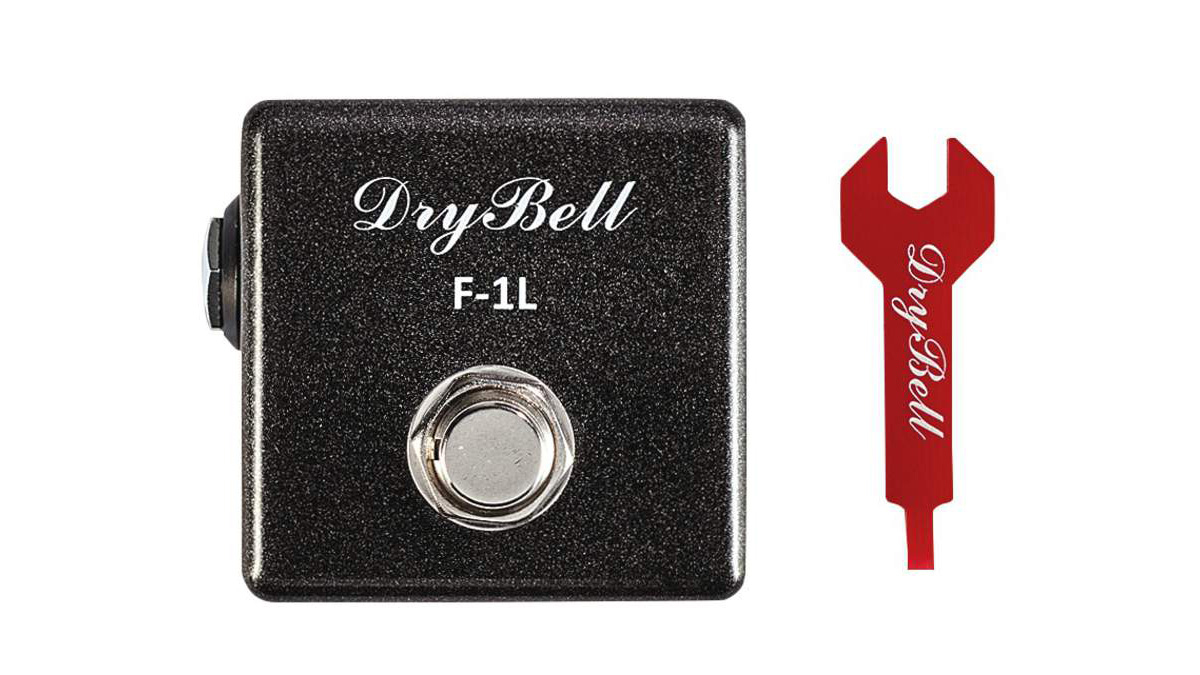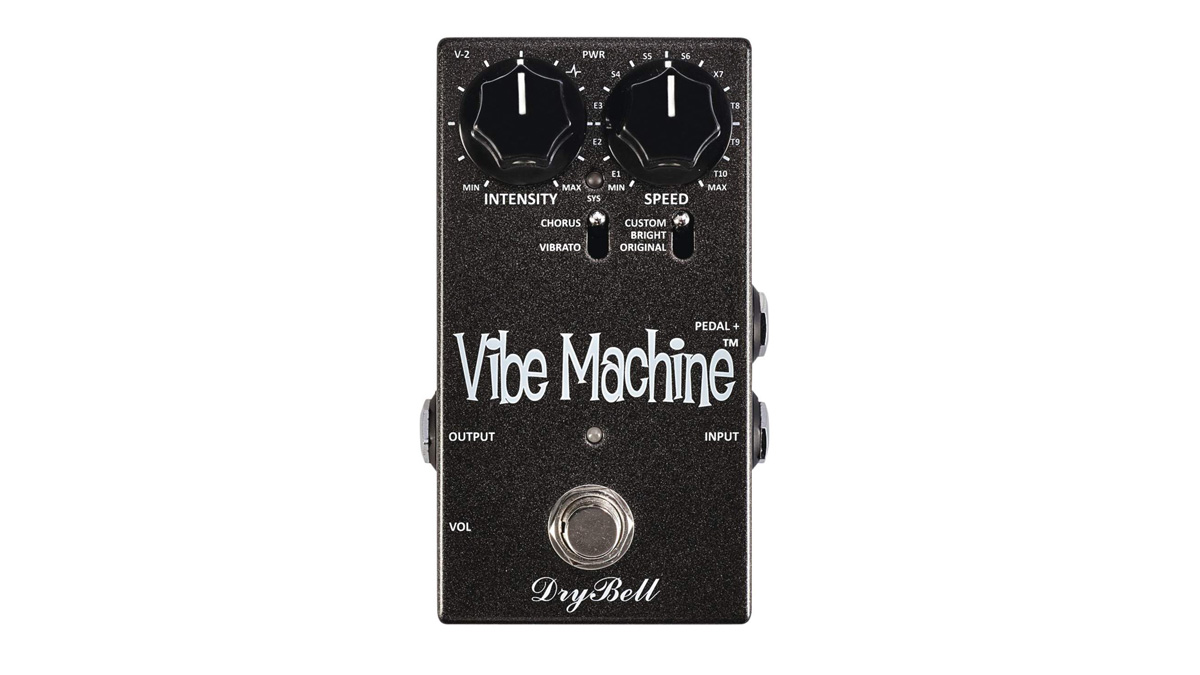MusicRadar Verdict
Your chance to put some casual modulation in your signal chain while using very little ’board space.
Pros
- +
Compact size, accurate vintage sound, thoughtful range of tweaking options, added functionality via footswitch socket.
Cons
- -
The factory-set position of the Symmetry and Range trimmers is crucial so mark them before you tweak!
MusicRadar's got your back
The Uni-Vibe occupies a special place in guitar-pedal mythology mainly for its use by Jimi Hendrix, Robin Trower and David Gilmour.
A four-stage phaser, initially inspired by rotary speaker sounds, the original circuitry with pulsating lightbulb surrounded by four photocells gave it a sound all of its own. It also spawned a slew of ‘vibe’ pedals from a range of manufacturers aiming to emulate those distinctive sounds in various ways.
One of the most respected of these in recent years has been the nicely compact DryBell Vibe Machine, a pedal with analogue circuitry that uses the photocell methodology. This second incarnation, the Vibe Machine V2, adds a bunch of features for extra tonal control and functionality, based on feedback from users of the original.
Speed and Depth knobs adjust your basic toggle-selectable Chorus or Vibrato effect. Chorus is not the chorus effect as provided by chorus pedals but is the signature phasey Uni-Vibe sound, a mixture of effected and dry signal. Losing the dry element for a true vibrato sound, Vibrato is perhaps more generic, but here offers a practical alternative with many musical applications.

A second toggle switch lets you set the sound to suit your signal chain. The ‘Original’ setting replicates the low impedance input of the original pedal and the resulting darker tone. Bright offers more top end, which suits our Les Paul’s humbuckers.
A third Custom setting lets you set impedance somewhere between the two via a trimmer (one of six on the side of the pedal). Between those two knobs and two toggle switches, it’s possible that all the sounds you’ll need are easily accessible, but you have those trimmers if you want to dive in and set the pedal to your exact requirements.
One sets the output volume so you can have unity gain or either a dip in volume (like the original) or a slight boost. Working closely in conjunction with this, the Grit trimmer adjusts output circuit behaviour adding presence, which interacts with the next piece of gear in the chain. An overdrive just after is our favoured choice and this can dial in a sweet spot to hit it just right.
Want all the hottest music and gear news, reviews, deals, features and more, direct to your inbox? Sign up here.
Of the other trimmers, Chorus makes the effect more pronounced while Symmetry and Range adjust lightbulb settings, tweaking the Vibe’s Throb - straight up or lopsided. Besides the trimmers there are also some ‘set and forget’ digitally controlled options, mainly relating to use of footswitch and expression pedal.
A variety of performance functions are available via DryBell’s optional matching F-1L footswitch (£32), which can be set up for tap tempo or switching between two speeds with or without a Leslie-style ramp function for adjustable transition time between the two.
It can also be used for remote bypass or to initiate a ‘Cancel’ function, which is a bypass mode that turns the effect off but still lets the signal pass through the pedal’s tonal circuitry. These functions can also be assigned to an expression pedal, although its default use is to control the speed like the treadle control of an original Uni-Vibe.

Authentic Uni-Vibe Chorus sound is perfectly captured here, whether you use it clean for Pink Floyd’s Breathe or with dirt for Robin Trower’s Bridge of Sighs. You may, of course, not be remotely interested in playing any of those but they are useful audible reference points alongside Jimi’s Machine Gun and various others within his live recordings.
Whatever you play you’ll be getting quality liquid phasing with a twist - shimmery at the top but with a distinctive low end throb, especially at higher Depth settings, and with a speed range from a slow psychedelic swirl to a warble.
Since DryBell’s first Vibe Machine was launched in 2010, claiming to be the smallest Uni-Vibe version in the world, other comparably sized pedals have entered the arena but none of them offers so many variations of sound and performance options as this V2. In fact, it’s probably the most versatile of all the Uni-Vibe type pedals out there.
Of course this is a specialist pedal, at this price if you were just looking for some casual modulation for your ’board you’d look elsewhere. However, for players who are really into that particular vintage of guitar-driven classic rock and appreciate the nuances that true photocell circuitry offers, here’s the chance to put some in your signal chain while using very little ’board space.
Trevor Curwen has played guitar for several decades – he's also mimed it on the UK's Top of the Pops. Much of his working life, though, has been spent behind the mixing desk, during which time he has built up a solid collection of the guitars, amps and pedals needed to cover just about any studio session. He writes pedal reviews for Guitarist and has contributed to Total Guitar, MusicRadar and Future Music among others.

